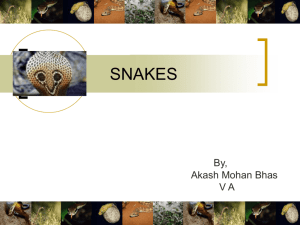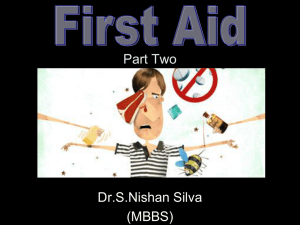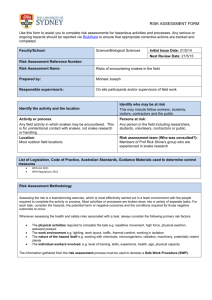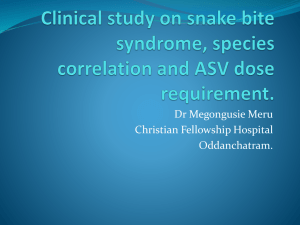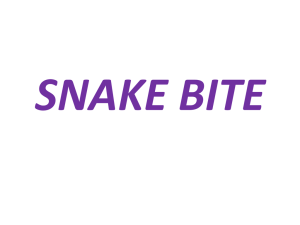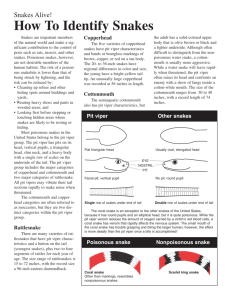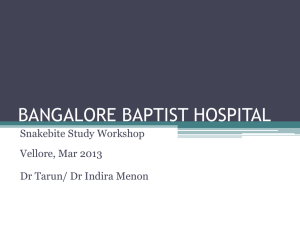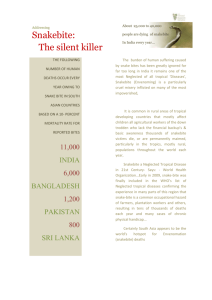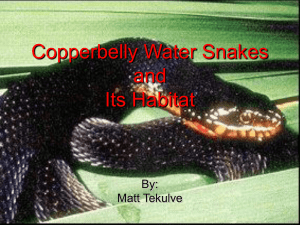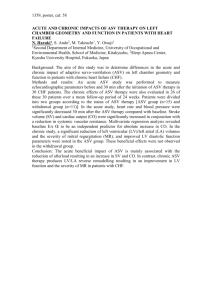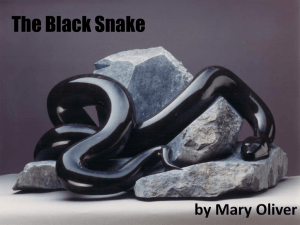Snake envenomation
advertisement
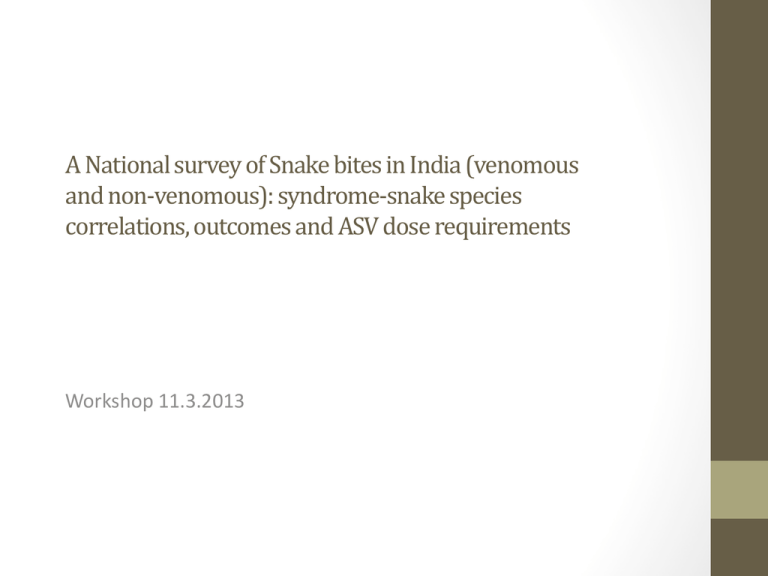
A National survey of Snake bites in India (venomous and non-venomous): syndrome-snake species correlations, outcomes and ASV dose requirements Workshop 11.3.2013 Background • Snake bite major environmental and occupational hazard in rural India and South Asia • There are estimated 50,000 deaths due to snake bite in India every year (1). • 97% of affected are in rural area • Only 23% of the total snake bite deaths occurred in hospitals (1) Mohapatra B, Warrell DA, Suraweera W, Bhatia P, Dhingra N, et al. (2011) Snakebite Mortality in India: A Nationally Representative Mortality Survey. PLoS Negl Trop Dis 5(4): e1018. doi:10.1371/journal.pntd.0001018 Figure 1. Selected risk factors for snakebite mortality in India (study deaths 2001–03). Mohapatra B, Warrell DA, Suraweera W, Bhatia P, et al. (2011) Snakebite Mortality in India: A Nationally Representative Mortality Survey. PLoS Negl Trop Dis 5(4): e1018. doi:10.1371/journal.pntd.0001018 http://www.plosntd.org/article/info:doi/10.1371/journal.pntd.0001018 Snake bites • There are around 216 species of snakes in India and 52 are recognised as poisonous (2). • Traditional big four include(3) • Viperidae (Russell's and saw scaled viper) • Elapidae (Indian cobra and krait) • Other snakes of medical significance – king cobra, monocled cobra, Asiatic cobra, Andaman cobra, saw scaled viper of northern India and the Hump nosed viper from Kerala (4) 2. PJ Deoras Snakes of India 3rd edition 1965fere 3. Minton 1957 referenced from Tumbare SM, Khadhilkar MV, Venom yield of major Indian snakes in captivity J of Bombay Vet Coll 2004 12 (1&2): 9-11 4. Dr. Girish Chandra www.iaszoology.com Syndromic approach Rationale • Only 25% of bite victims bring the snakes • Venom detection kits are slow and costly(5) • Misidentification by medical staff Problems • Syndrome species correlation has not been done in India Lab correlation studies 5. Christeine A. Ariaratnam, Mohamed H. Rezvi Sheriff, Carukshi Arambepola, R. David G. Theakston, and David Warrell. Syndromic Approach to Treatment of Snake Bite in Sri Lanka Based on Results of a Prospective National Hospital-Based Survey of Patients Envenomed by Identified Snakes Am. J. Trop. Med. . Hyg., 81(4), 2009, pp. 725–731 Figure 3. Estimated deaths and standardized death rates in states with high prevalence of snakebite deaths, 2005. Mohapatra B, Warrell DA, Suraweera W, Bhatia P, et al. (2011) Snakebite Mortality in India: A Nationally Representative Mortality Survey. PLoS Negl Trop Dis 5(4): e1018. doi:10.1371/journal.pntd.0001018 http://www.plosntd.org/article/info:doi/10.1371/journal.pntd.0001018 Regional variations • Haemotoxic in South India and Russel’s viper clinical syndrome in Tamil Nadu (6) • The neurotoxic in Northern India(7) • Need syndrome species correlation • Regional variability of ASV efficacy 6. Kulkarni, M. L. Anees, S. Snake venom poisoning: experience with 633 cases. Indian Pediatrics 1994 Vol. 31 No. 10 pp. 1239-1243 7. Bhardwaj, A.; Sokhey, Bhardwaj, A.; Sokhey, J Snake bites in hills of North India J National Medical Journal of India 1998 Vol. 11 No. 6 pp. 264-265 ASV dosing • WHO guidelines • 10 vials Reconstituted ASV 1ml will neutralise – based on studies in albino mice Cobra 0.6 mg Common-Krait 0.45 mg Russell's Viper 0.6 mg Saw scaled Viper 0.45 mg • Validation of the dose is essential through a dose finding study • ASV dose used varies from hospital to hospital The study • Need for syndrome species correlation • Geographic variability of syndromes and ASV efficacy • Different management practice, ASV dosing schedules and their clinical outcomes
